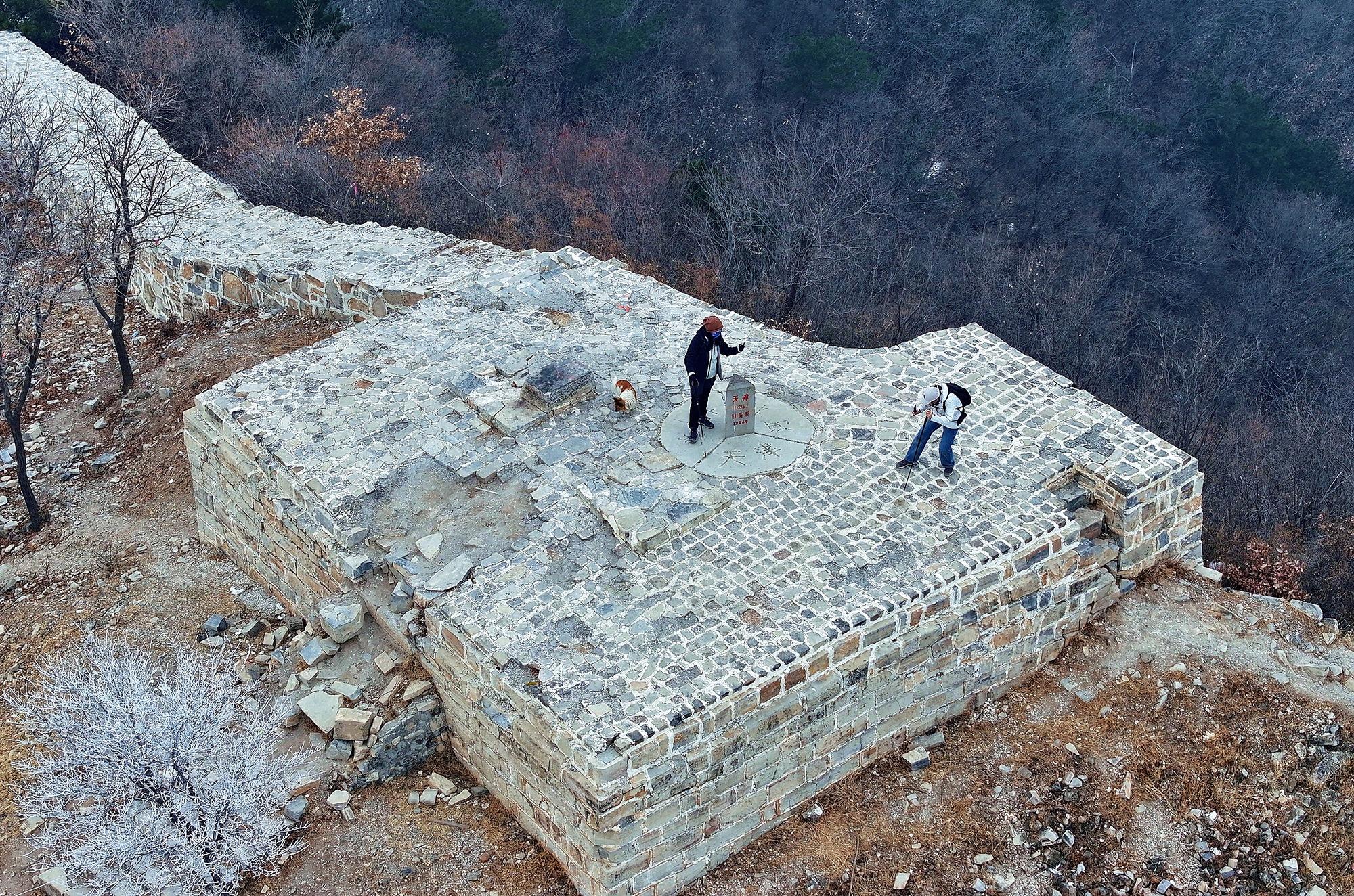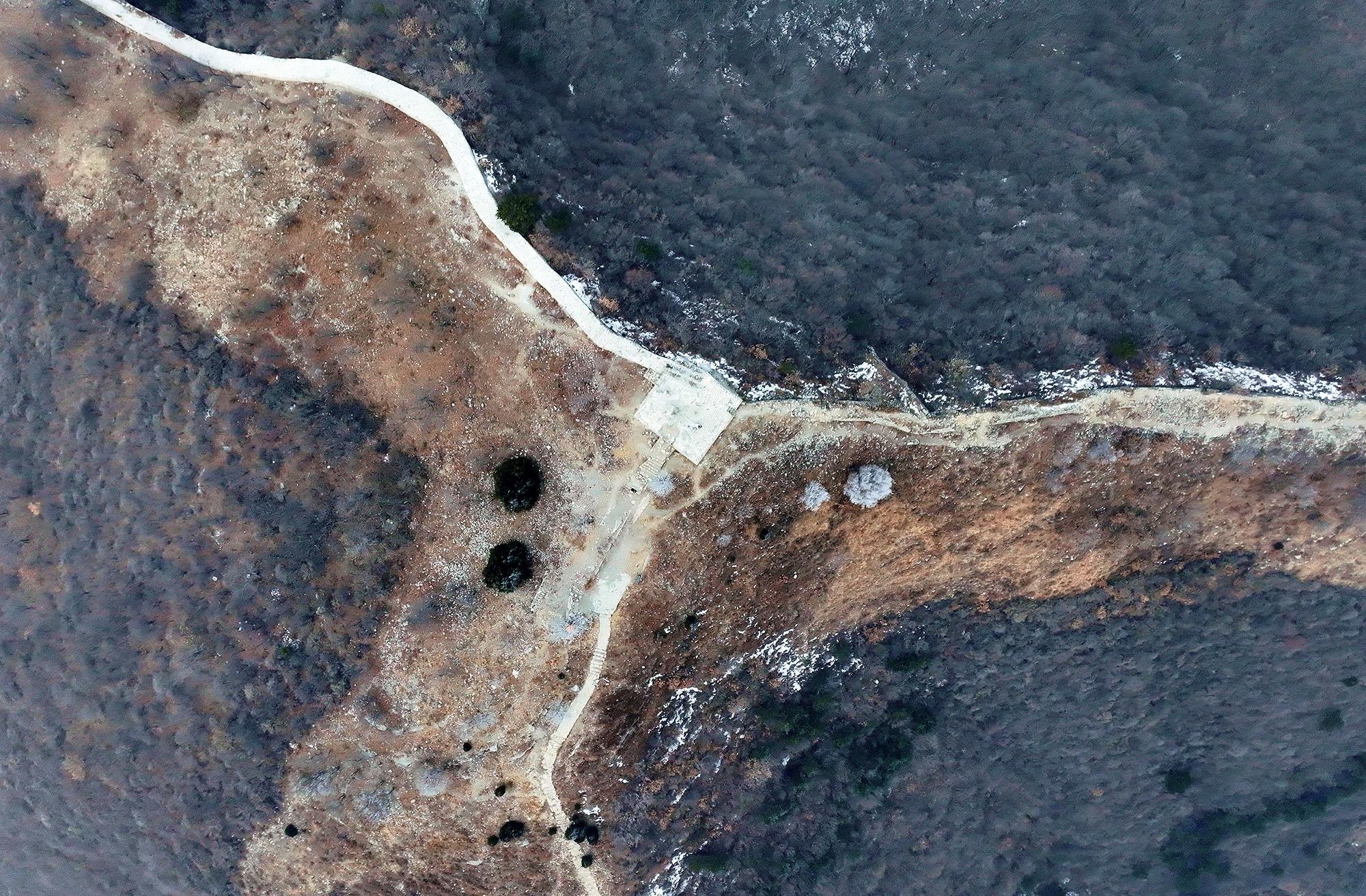 A panoramic view by drone captures two visitors at the border of Beijing, Tianjin and Hebei province. (PHOTO / XINHUA)
A panoramic view by drone captures two visitors at the border of Beijing, Tianjin and Hebei province. (PHOTO / XINHUA)
TIANJIN — During the Spring Festival holiday, tourists tried their hands at making Lunar New Year woodblock prints at a folk culture center in Yangliuqing township in Tianjin municipality.
"Many tourists have a natural affinity for Yangliuqing woodblock prints. I've heard many visitors from Beijing and Hebei say that their families had the tradition of putting up prints when they were little," says Xia Ting, head of the tourism distribution center in Tianjin's Xiqing district.
"Tourists from the Beijing-Tianjin-Hebei region accounted for about 70 percent of the total number of tourists we received last year," Xia says.
More than 100 million people live in the Beijing-Tianjin-Hebei region, which boasts a wealth of cultural and tourism resources. In 2014, a national strategy proposed the coordinated development of the Beijing-Tianjin-Hebei region, and since then, Beijing, Tianjin and neighboring Hebei province have cooperated on boosting cultural and tourism development.
READ MORE: Beijing, Tianjin, Hebei come closer for development
Gao Cuilian, who owns a farmyard in Changzhou village in Tianjin, is busy treating tourists to freshly cooked dishes. "Rural ecotourism is becoming more popular among urban tourists from Beijing, Tianjin and Hebei, and my business is doing very well," she says.
 An aerial view of the meeting point between the three regions. (PHOTO / XINHUA)
An aerial view of the meeting point between the three regions. (PHOTO / XINHUA)
Data from the China Tourism Academy shows that Beijing, Tianjin and Hebei were among each other's top sources of tourists in 2023. Among the tourists received by Tianjin, those from Hebei and Beijing hold the top two rankings, accounting for 49.1 percent of the total number of tourists from outside of Tianjin. Hebei and Beijing were the top two destinations for tourists from Tianjin, and they made up 52.7 percent of the total out-of-town trips made by Tianjin tourists.
Since 2014, Beijing, Tianjin and Hebei have signed agreements on culture, performing arts, protection of the Great Wall and personnel exchanges to promote the integrated development of the cultural and tourism market in the region.
The three regions have also developed high-quality cultural tourism products and brands, and have hold tourism development forums, intangible cultural heritage exhibitions and tourism promotions to enhance the coordinated development of tourism in the region.
"We planned Beijing-Tianjin-Hebei winter-tour theme routes for Spring Festival so tourists from the region can enjoy folk customs, lantern shows, winter sports and comfortable hot springs, and celebrate Spring Festival together," says Chen Bing, deputy head of the Tianjin Bureau of Culture and Tourism.
ALSO READ: A chip off the old block
"The culture and tourism industries of Beijing, Tianjin and Hebei have a good foundation for coordinated development. They are capable of becoming a tourism community of mutual resources and coordinated development," says Xu Hong, dean of the College of Tourism and Service Management of Nankai University.
"In the future, Beijing, Tianjin and Hebei should give full play to the comparative advantages of their tourism industries, break down the barriers to the flow of tourism elements, and improve the quality of coordinated development of tourism in the region," Xu says.


